





Hinkle Lizard in Box Green Color
This edition of Lure Lore features one of my favorite miscellaneous baits. One that covers both Wisconsin and Kentucky collectors, the Hinkle Lizard.
You often hear that fishing lures are designed as much to catch fishermen as they are to catch fish. I think that certainly applies to this lure. The Hinkle Lizard is an early plastic jointed lizard fishing lure really ahead of its time in design. Double jointed and with an offset "outrigger" hook setup on one of the sets of hooks similar to a Helin Flatfish, it is really unlike anything else you will find. Production began in 1949 by Joseph Hinkle in Louisville, Kentucky. He applied for a patent in March of 1949 and was granted patent number 2,618,092 on November 18, 1952. As you can see from the patent image the lure contained some through wire construction through the plastic body. The two halves were then marine glued together.
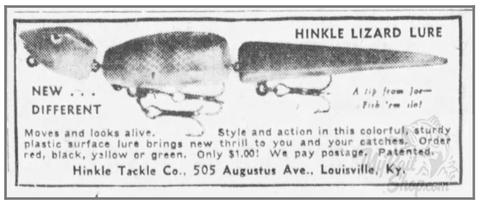
1954 Hinkle Lizard Kentucky Newspaper Ad
Sometime around 1954 the partnership of Elmer Deuster and August "Augie" Machtig (possibly Elmer Deuster at first and later in partnership with Machtig, conflicting stories) purchased the rights and all remaining stock of the Hinkle Lizard. Duester and Machtig were lure makers in Wisconsin more famously known in the lure collecting community for their Gopher musky lure. Previous research had shown that this purchase was done in 1954 but I'm not 100% convinced of that date being firm. The above ad is one that I discovered recently that may actually shed light on a slightly later date (or not). Hard evidence of the actual date is probably lost forever to history but it is probably sometime around this time period.
The Wisconsin distribution of this bait mainly focused on assembling the several thousand bait bodies they purchased and distributing in the same yellow boxes but now with a Milwaukee address imprinted on the side. Note this address was the bowling alley that Deuster ran, Deuster's Lanes, in Milwaukee, Wisconsin. Once they ran out of the boxes they began to assemble them into bags with a cardboard topping. Red, an extremely rare color in a marked box, is now much more common to find in this bagged version. The bagged lizard was eventually renamed and marketed as Sally the Hooker Salamander lure and marketed under D-M Lures (Deuster-Machtig Lures). It also now included a collar around the neck joint and a diving lip. These are additions / improvements obviously made to try to improve the action and fishability of the lure. These two changes take what was once a surface lure and allow it to dive while holding the first two sections together.
Even after the sale to Deuster-Machtig it appears that Hinkle was still somewhat involved. Hinkle was apparently a "snow bird" and wintered in Florida. He must have had an agreement to keep selling some of the Lizards even after the sale as there are marketing pieces and Lizards with a Florida address and "picture" box. It is essentially a piece of the marketing cut out and glued onto the yellow box. These are the rarest of the Hinkle Lizard boxes to find by far. I can also confirm that these were found mixed in with Deuster inventory after he shut down so there must have been some Hinkle / Deuster collaboration.
Eventually Deuster and Machtig would shut down their business in the early in 1960's. Elmer would later sell off all of his excess inventory to a Wisconsin collector advertising in a local newspaper for vintage fishing lures. Decades later I would purchase these remaining lures including experimental colors from this collectors family after his death. You can see a photo of some of these special colors below. Notice the beautiful marbleized colors!
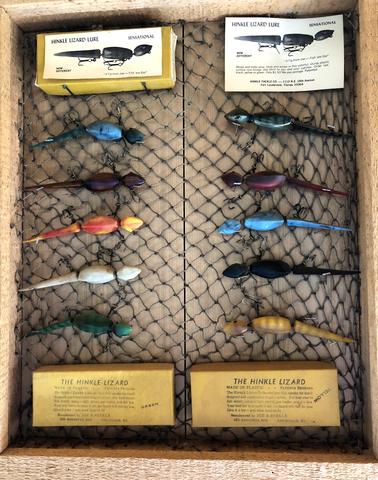
Hinkle Lizard Case with Experimental Colors
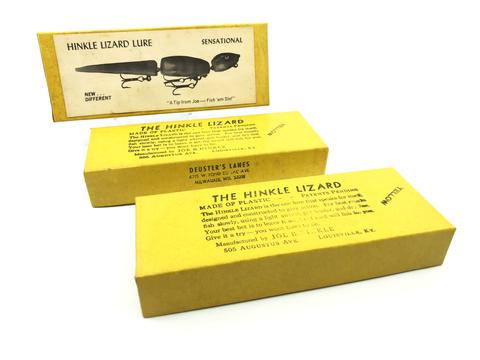
Hinkle Lizard Three Box Age Examples
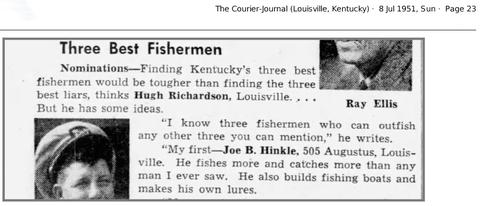
Hinkle Lizard Three Box Age Examples
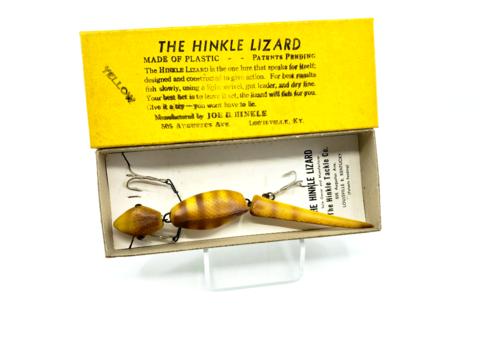
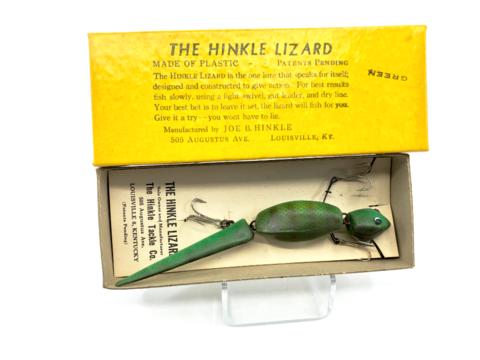
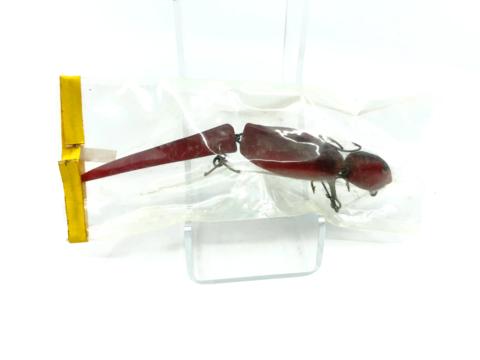

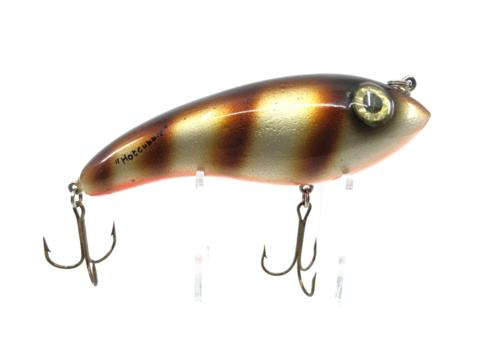
I've mentioned this lure before in my Lure Mysteries blog series but I keep it hanging in front of me and it keeps bothering me that it is still unknown. It's a real nice bait. About 5 1/4" long. Marked "Hotcubbie" on one side and signed on the other. You can see more detailed pics of it in this article. Let me know if you can help identify who made this lure or any information about it.

If you have any further information on any of the items displayed on this page which you'd like to share, please send your comments to me and I'll update the page accordingly. Contributions of interesting items and/or unknowns are encouraged.

Comments? EMAIL ME!
Web Author: Keith Bell
Copyright ©2021 by My Bait Shop, LLC - ALL RIGHTS RESERVED